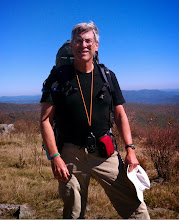The hike was an out-and-back, with a total distance of 10.2 miles. The pathway was level, smooth, and dry, even though there was wet swamp all around us. Near the trailhead, there is an interesting "boardwalk" pathway that goes through the swamp, and it is well worth taking.
We saw a fair amount of wildlife: turtles (common snapping turtle, red-bellied slider, and yellow-bellied slider); black vultures; pileated woodpeckers; a large cottonmouth; double-crested cormorant; three unknown ducks; great blue heron; several groups of butterflies; and some kind of a carnivore from a distance. We think the latter was a bobcat, as it appeared to have (through binoculars) a cat-like face, short ears, and no prominent tail, but we couldn't rule out a grey fox. We decided bobcat, 90%. My last hike here, three years ago, I saw this animal - but not this time.
There are many other pathways to explore in what is left of this large swamp, much of which has be drained and converted to housing developments, farms, and woodlots. The part that remains (113,000 acres plus the lake) is a national wildlife refuge and "contains some of the most important wildlife habitat in the mid-Atlantic region." The Washington Ditch trail is a straight shot to the lake, and is very pleasant and interesting. Water is always to one's right walking to the lake, and quite often on the left was well. There are large stands of cypress and other water tolerant trees the entire way.
Here are a bunch of photos from our never-dismal hike, starting with Jeff, Jo Lee, and Aseeyah at the start of the hike.
This hike has some historic significance as well as great natural history. George Washington did the original survey work for a canal here.
This is typical of the swamplands along the pathway.
A raccoon passed this way and left its tracks.
Spring flowers, such as this violet, are beginning to bloom here.
This group of butterflies, which I believe are zebra swallowtails, were clustered on some animal scat. There were also a few tiger swallowtails that came in to the cluster at times.
We saw many turtles, like this yellow-bellied slider, catching some rays on this day with temperatures in the mid-Seventies (F).
Along the hike, we found many pieces of wood that had been cut by beaver and stripped clean of bark, one of their major food sources. And near Lake Drummond, we saw a beaver lodge.
Lake Drummond, one of Virginia's two natural lakes.
The lake water looks a bit like weak tea from the tannic acid.
Swamps were once considered wastelands, but we now know that they are very important ecologically. Plus, they are just plain interesting.
Cypress "knees" are part of the root system of the cypress, and are believe to help anchor the tree's shallow roots in a wet environment and perhaps aid in the oxygenation of the tree's roots.
We all agreed that this was a fun day hike, and beat working (for those who still work). Aseeyah thought that it would be great to come back here for a night hike to explore the swamp after dark, which would be very cool with headlamps or even in a bright full moon. And she and I thought that coming here a couple of times a month year round and taking careful note of the changes would be a great natural history study (she and I are both studying in the Virginia Naturalist program).























Great hike. Lots of wildlife. Love the group of butterflies and the turtle. I miss seeing turtles around my old lake.
ReplyDeleteI love going down there and exploring. I plan on checking out a different area of the dismal swamp by myself, and then leading another group hike there once I am familiar with what conditions we will encounter.
ReplyDelete